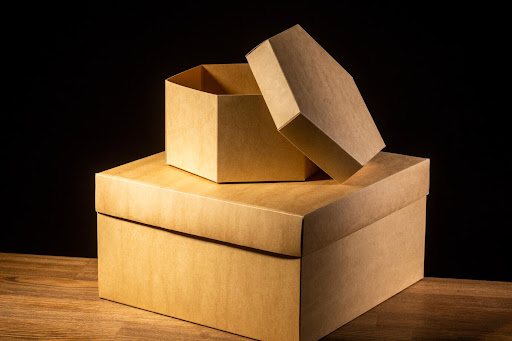The Evolution of Cardboard Boxes from Packaging to Art

Cardboard boxes, once relegated to the realm of practicality and utility, have evolved into a versatile canvas for creativity and artistry. As Cardboard Box Manufacturers continue to refine their designs and processes, artists, crafters, and even businesses are finding new and innovative ways to utilize cardboard boxes. In this article, we'll explore the evolution of cardboard boxes, from their origins in packaging to their current status as a medium for artistic expression.
The Birth of Cardboard Boxes
Cardboard boxes, as we know them today, have a history that dates back to the 19th century. The Industrial Revolution created a need for efficient and durable packaging materials to transport goods across vast distances. Cardboard boxes quickly gained popularity due to their lightweight, sturdy, and cost-effective nature.
Originally, cardboard boxes were primarily associated with utilitarian functions such as shipping and storage. They were plain, brown, and unadorned, designed solely to protect and organize products during transit.
The Role of Cardboard Boxes in Packaging
Protection: Cardboard boxes protect a wide range of products, from delicate glassware to heavy machinery. Their durability and strength are ideal for safeguarding items during shipping and storage.
Organization: Cardboard boxes come in various shapes and sizes, making it easy to organize and categorize products. This aids in inventory management and efficient use of storage space.
Customization: With advancements in Cardboard Box Manufacturing, businesses can now order custom-designed boxes tailored to their specific needs. This includes branded packaging with logos and other marketing elements.
Eco-Friendly: Cardboard is a sustainable and recyclable material, making it an environmentally responsible choice for packaging.
The Artistic Evolution of Cardboard Boxes
In recent years, cardboard boxes have transcended their traditional role as mere containers. They have found a new lease on life as a medium for artistic expression. Here are some of the key factors that have contributed to this artistic evolution:
1. Sustainability
The growing emphasis on sustainability and eco-consciousness has fueled the interest in upcycling and repurposing materials. Cardboard boxes, being recyclable and readily available, are an eco-friendly choice for artists seeking to create without harming the environment.
2. Accessibility
Cardboard boxes are ubiquitous, making them readily accessible to artists of all backgrounds. They're often free or low-cost, and their versatility means that artists can experiment without a significant financial investment.
3. Customization
Custom Cardboard Box Manufacturers have allowed artists to order boxes with specific dimensions and designs. This level of customization empowers artists to bring their creative visions to life using cardboard as their canvas.
4. Popularity of DIY and Crafting
The rise of DIY culture and crafting has significantly contributed to the artistic use of cardboard boxes. Crafters and makers have discovered that cardboard can be shaped, painted, and embellished in countless ways.
5. Art Installations and Sculptures
Artists have taken cardboard box art to new heights by creating intricate sculptures and large-scale installations. Cardboard's versatility allows for the creation of impressive three-dimensional artworks.
6. Collaborations with Businesses
Some businesses have recognized cardboard boxes' artistic potential and collaborated with artists to create unique, limited-edition packaging. This approach enhances the product's value and supports the arts.
7. Cultural Significance
Cardboard box art has also taken on cultural significance, with artists using their work to explore themes related to consumerism, recycling, and the disposable nature of modern society.
Inspiring Cardboard Box Art Projects
The artistic potential of cardboard boxes is limited only by one's imagination. Here are a few inspiring cardboard box art projects that showcase the diverse ways in which this medium can be used:
1. Cardboard Sculptures
Artists like Kiel Johnson create intricate sculptures using cardboard, demonstrating that this humble material can be transformed into breathtaking works of art.
2. Cardboard Installations
Immersive art installations made from cardboard boxes, such as those by Monika Grzymala, invite viewers into a world where everyday materials become extraordinary.
3. Cardboard Fashion
Fashion designers are experimenting with cardboard as a textile, creating avant-garde clothing and accessories that challenge traditional notions of wearability.
The Future of Cardboard Box Art
The artistic evolution of cardboard boxes shows no signs of slowing down. As more individuals and businesses recognize the creative potential of this versatile medium, we expect to see an even broader range of artistic applications in the future. Whether through art installations, sculptures, or innovative upcycling projects, cardboard boxes have firmly established themselves as a unique and accessible canvas for creative expression.
For businesses seeking custom cardboard boxes to enhance their brand presentation or artists looking to explore the artistic potential of cardboard, Alzaman Packaging offers a range of options. Their commitment to quality and customization can help you bring your creative vision to life using cardboard as your canvas. The future of cardboard box art is limited only by imagination, and the possibilities are endless with the right cardboard box manufacturers.
